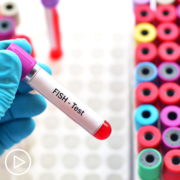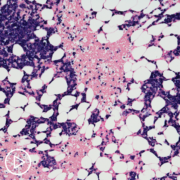What Are the Treatment Options for Relapsed/Refractory Myeloma?
What Are the Treatment Options for Relapsed/Refractory Myeloma? from Patient Empowerment Network on Vimeo.
What do relapsed/refractory myeloma patients need to consider when choosing a treatment approach? Expert Dr. Benjamin Derman explains the impact of previous therapies on options, various treatment classes available, and why combination treatments may be optimal.
Dr. Benjamin Derman is a hematologist and oncologist specializing in multiple myeloma at the University of Chicago Medicine Comprehensive Cancer Center. Learn more about Dr. Derman.
See More from Engaging in Myeloma Treatment Decisions
Related Resources:

|

|

|
Transcript:
Katherine:
Unfortunately, relapse is common among myeloma patients. Or it may be that a treatment stops working, and so the person’s myeloma becomes refractory.
When considering a treatment for relapsed or refractory myeloma, are there different questions that patients should be asking their healthcare team?
Dr. Derman:
Yeah. I mean, that’s a great question. I think part of it is every patient’s journey with myeloma ends up being quite unique, in part because we don’t have a lot of consensus in terms of how to treat myeloma. So, I may choose one regimen, but the other doc down the street is going to recommend a slightly different one. And now, they all have efficacy. No one’s going to be recommending something that’s not good, right? But what it means is that the journey, the number of therapies, the types of therapies that a patient has received are all going to be quite different than the next.
So in part, sometimes the past therapies are going to dictate what options are available.
So, I mentioned some different classes of therapies. The proteasome inhibitors, there’s a certain number of those. The immunomodulatory iMiDs, there’s a certain number of those. The CD38 monoclonal antibodies, there are those. And then there are a few other drug classes as well.
And if we’re using three or sometimes four drugs at a time for each what we call line of therapy, meaning each time a patient changes treatment – right? Eventually, we’re going to have gone through a number of treatments that now the patient would be – their disease would be resistant to. And so, you don’t really – it’s not really going to be prudent or wise to go back to therapies that didn’t work previously.
And so, we start mixing and matching, and we come up with regimens that we think are going to hopefully throw a curveball to the myeloma to really try to get rid of it again. That’s what I mean by it’s dictated by past therapy.


















